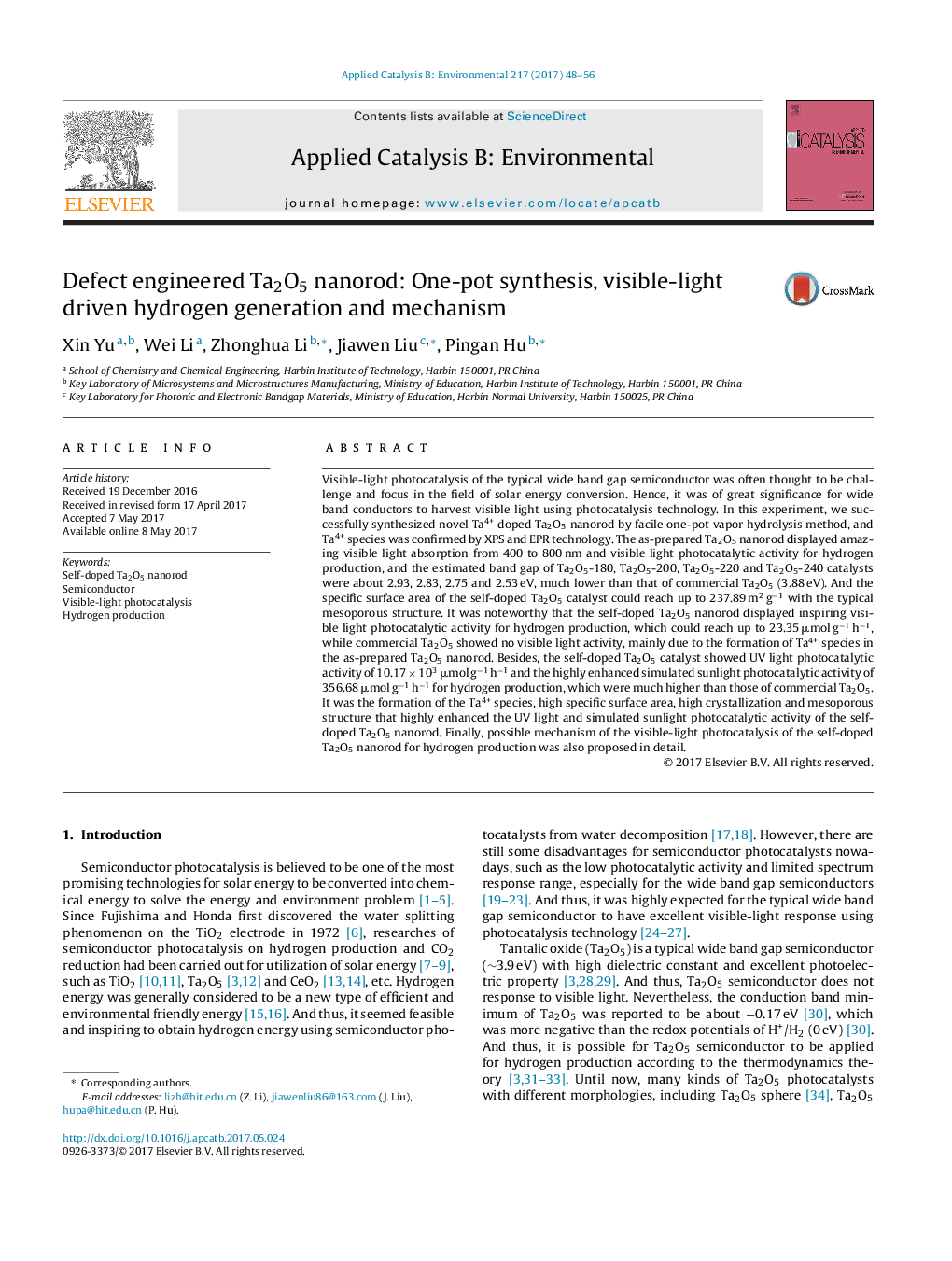| Article ID | Journal | Published Year | Pages | File Type |
|---|---|---|---|---|
| 6453909 | Applied Catalysis B: Environmental | 2017 | 9 Pages |
â¢A novel Ta4+ doped Ta2O5 nanorod was prepared by facile vapor hydrolysis method.â¢The self-doped Ta2O5 nanorod displayed excellent visible light absorption and efficient visible-light photocatalytic activity for hydrogen production.â¢The formation of Ta4+ species effectively narrowed the band gap of Ta2O5.â¢Possible visible-light photocatalysis mechanism of the self-doped Ta2O5 nanorod for hydrogen production was proposed.
Visible-light photocatalysis of the typical wide band gap semiconductor was often thought to be challenge and focus in the field of solar energy conversion. Hence, it was of great significance for wide band conductors to harvest visible light using photocatalysis technology. In this experiment, we successfully synthesized novel Ta4+ doped Ta2O5 nanorod by facile one-pot vapor hydrolysis method, and Ta4+ species was confirmed by XPS and EPR technology. The as-prepared Ta2O5 nanorod displayed amazing visible light absorption from 400 to 800 nm and visible light photocatalytic activity for hydrogen production, and the estimated band gap of Ta2O5-180, Ta2O5-200, Ta2O5-220 and Ta2O5-240 catalysts were about 2.93, 2.83, 2.75 and 2.53 eV, much lower than that of commercial Ta2O5 (3.88 eV). And the specific surface area of the self-doped Ta2O5 catalyst could reach up to 237.89 m2 gâ1 with the typical mesoporous structure. It was noteworthy that the self-doped Ta2O5 nanorod displayed inspiring visible light photocatalytic activity for hydrogen production, which could reach up to 23.35 μmol gâ1 hâ1, while commercial Ta2O5 showed no visible light activity, mainly due to the formation of Ta4+ species in the as-prepared Ta2O5 nanorod. Besides, the self-doped Ta2O5 catalyst showed UV light photocatalytic activity of 10.17 Ã 103 μmol gâ1 hâ1 and the highly enhanced simulated sunlight photocatalytic activity of 356.68 μmol gâ1 hâ1 for hydrogen production, which were much higher than those of commercial Ta2O5. It was the formation of the Ta4+ species, high specific surface area, high crystallization and mesoporous structure that highly enhanced the UV light and simulated sunlight photocatalytic activity of the self-doped Ta2O5 nanorod. Finally, possible mechanism of the visible-light photocatalysis of the self-doped Ta2O5 nanorod for hydrogen production was also proposed in detail.
Graphical abstractDownload high-res image (137KB)Download full-size image
